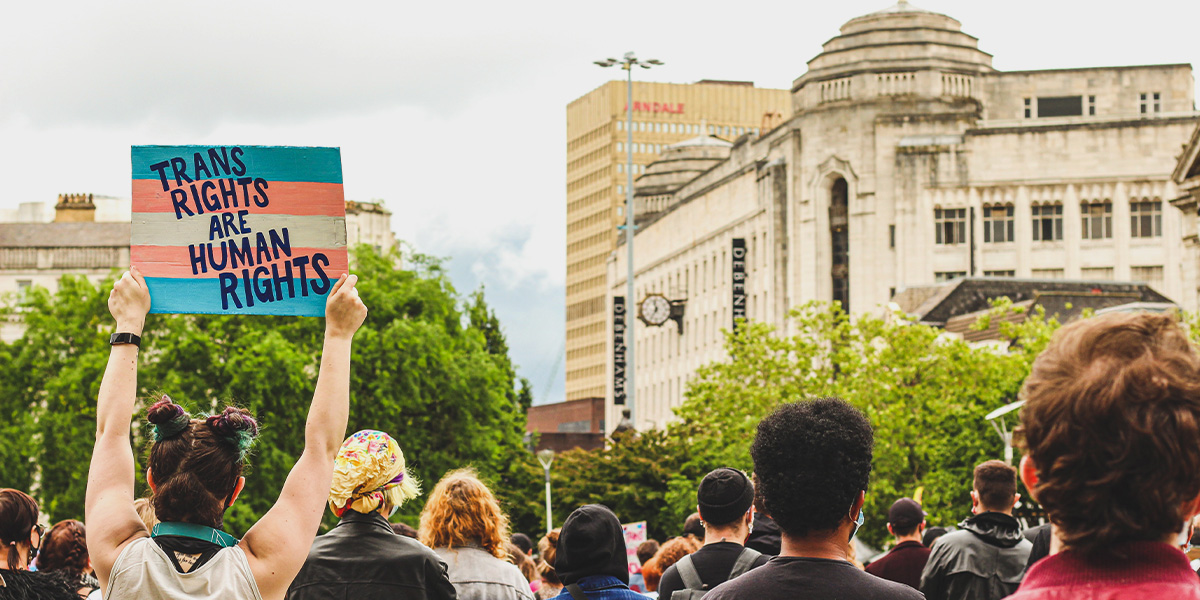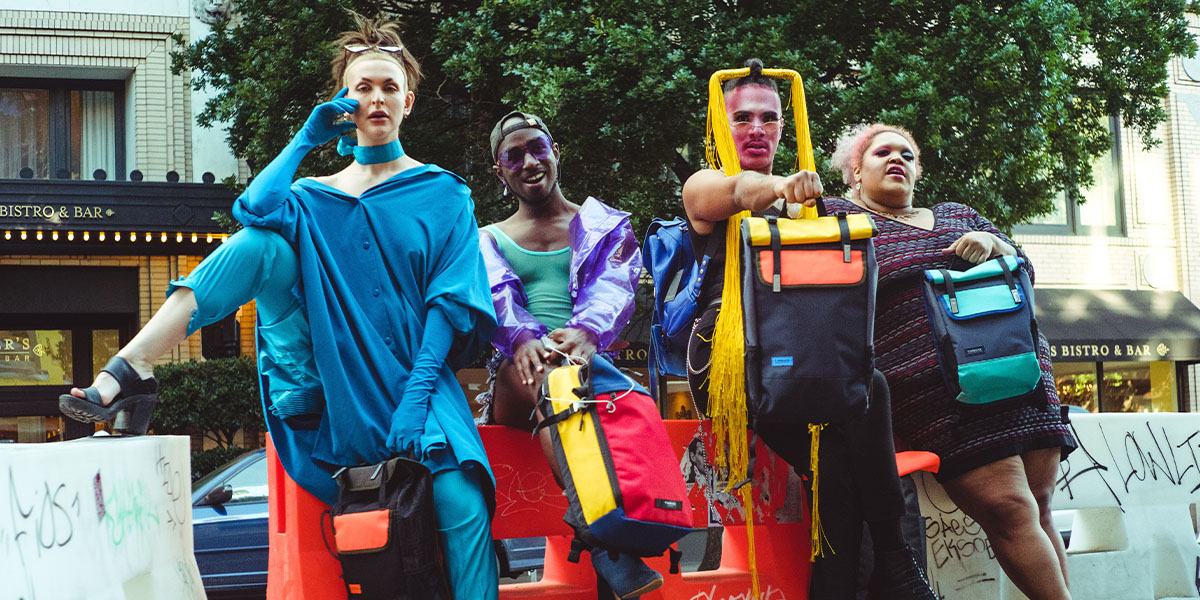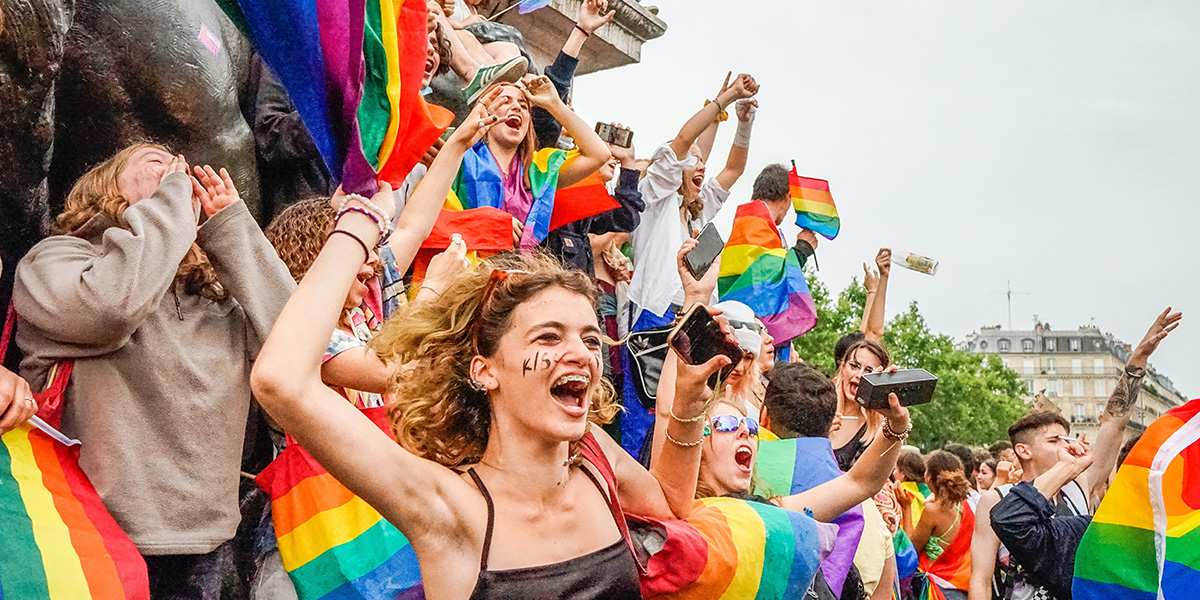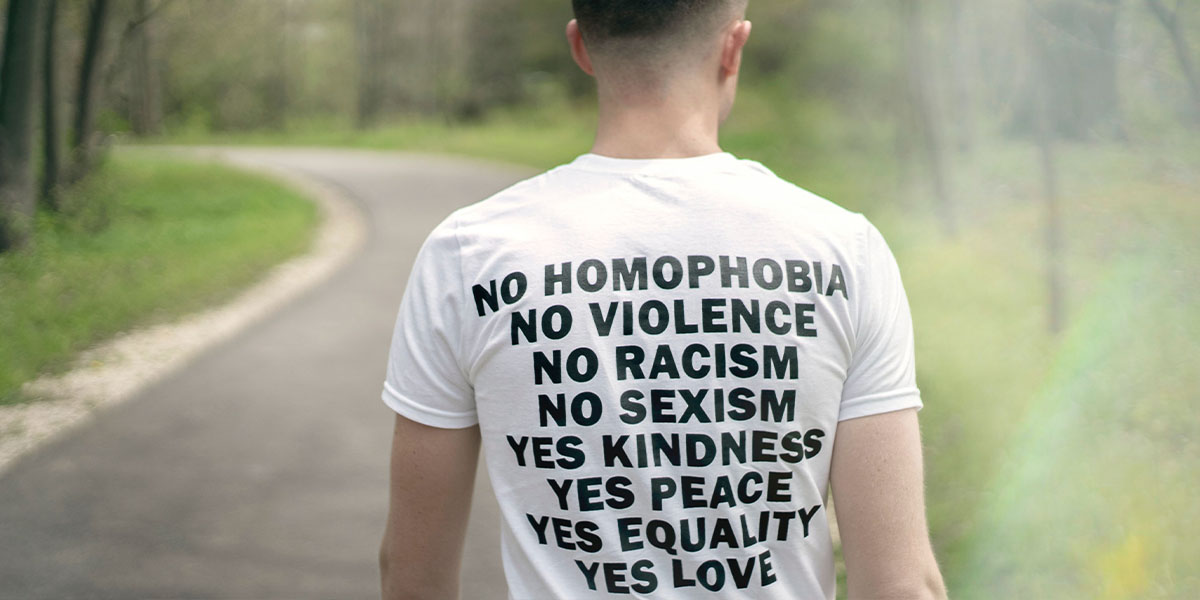In a world of uncertainty and phobia, it is getting harder and harder for people to live their authentic lives. Especially when brands, who have stated that they are “allies” and “support the LGBTQIA+ community”, go back against their stance during a month that is meant to celebrate, honor and love that community. Quite frankly, it’s getting more complex for the LGBTQIA+ community to just exist in the world. And therefore, it’s even more important for companies to figure out what being an LGBTQIA+ ally in a world of phobia truly looks like.
So, how can brands better support the LGBTQIA+ community?
They need to start from the inside… and work outward.
Brands need to know they have an impact. Not only on the people they serve but on wider culture and social policy. And that it is up to them to help build a community of trust. To be an authentic ally, DEI should be ingrained in both a company’s business practices (internal) and marketing strategies (external). And it also means taking a hard, close look at the reality of the situation. When addressing the LGBTQIA+ community, the stance and focus of many brands is on “love is love”. While that is important, brands also need to acknowledge and provide support around the fact that more queer and trans people are in danger than ever before.

US May 2023:
- 520- Anti-LGBTQ+ bills introduced in U.S. state legislature in 2023 (a record)
- 220- Bills specifically targeting transgender and non-binary people (also a record)
- 70- Anti-LGBTQ+ laws enacted so far this year (yep, another record)
These trends and policy changes are greatly impacting the LGBTQIA+ community, making it even harder for people to live their truth. As a part of our DIBE (Diversity, Inclusion, Belonging and Equity) series “More Than a Month”, Andrew, a Senior Manager here at The Sound, shared with us his point of view regarding phobia and how brands can authentically show up for the LGBTQIA+ community.
This is Andrew’s message…
No one tells you how hard life can be. I thought I had it all figured out. I thought I knew who I was and what I wanted in life. And I came to the realization that what I thought would be my future was all a lie. I was denying myself from being exactly that – myself.
I let the world define who I was, and I conformed to their notion of “comfortable.” Me being an enneagram 2 and someone who is a deeply empathetic person, I never wanted others to feel uncomfortable. I always put others’ feelings, emotions and desires above my own. And so my whole life, I denied who I was for others’ comfortability.
But in turn, that comfortability for others became darkness for me. I couldn’t see the light in the midst of the darkness. I hated myself. I felt like I was an outcast. I felt like I didn’t deserve happiness. I felt like I didn’t deserve to live.

I thought living two lives – a straight, public life, and a behind-closed-doors, gay life – would help, but it just made things even more complicated. It just made me always afraid; afraid that people might find out, afraid that people would leave me, afraid that I would be abandoned. I would always double check that my gay playlist wouldn’t start playing in the car with anyone (because that was only ever meant for my ears). I would second guess everything – the way I walked in public, the way I would stand (making sure not to pop my hip too much), and the way I would sit.
This duality I was living, and the complexity it brought, just made life even harder. I became really good at masking my feelings and hiding how I felt and who I was to everyone. But it got to the point that the darkness was all-consuming.
Every night, before bed, I would pray to not wake up if I was still gay. I didn’t want to be this person that I felt society didn’t want me to be. From laws banning our existence, to hate crimes that would happen for just walking down the street, the signs were all around – me being gay was not an option.
And throw in religion, and girl – things just got even more complex (but I won’t dive into THAT).
But it wasn’t until I truly hit rock bottom that I was able to start seeing a sliver of hope, a glimpse of a future that was waiting for me.
I found my chosen community – people I could trust; people who loved me unconditionally; people who reinforced the notion they weren’t going anywhere. It was this community that allowed me to explore who I was, what I wanted in life, and what it felt to truly be loved. This community helped me unlearn a lot of the lies that I told myself about myself and helped me on a journey of discovery, love and acceptance. It’s taken me a long time to get to this point (to even be writing a blog post on my company’s website) and I have put in the hard work to uncover Andrew– in all of his scars, in all of his traumas, in all of his pain, he was able to flourish into what he is today: an openly proud, self-loving, accepting gay man. For the first time in my life, I’m able to not only see the light amongst the darkness, but I am able to enjoy the light now.

So, here we are. Pride Month.
Pride Month is meant to be a time of celebration – a time where the LGBTQIA+ community, no matter where they are in their journey of discovery, can celebrate themselves, love themselves, and be their true authentic selves. It’s a time for my community to put aside the darkness and just live in the light. But Pride Month can also be an extremely difficult time for those who are still closeted, self-hateful and self-denying.

As such, here is my message to brands.
Brands have to remember that their Pride marketing efforts, the products they slap a rainbow on, or their messaging around allyship can be triggering for the LGBTQIA+ community in more ways than one.
And when a brand says that they support the community, but then retract that idea when there is pushback from a small, yet loud group of people who are anti-LGBTQIA+, it makes us feel like brands truly don’t care about us at all. They are only after one thing and one thing only – our money.
So, brands, if you’re reading this, I just have one thing to say to you – if you want to be an ally, be a damn ally. Put your money where your mouth is, and SUPPORT.
- Don’t just put a float in a local parade and say “we see you!” but then disappear as soon as July 1st rolls around.
- Don’t roll out your pride merchandise and make a big spectacle of it, but then immediately remove it when a few loud protestors aren’t happy about it.
- Don’t try and be supportive of this community, but then have other practices that negate that sentiment.
You are dealing with a community that for the longest time has had a life full of trauma, sadness and exclusion. Brands have to follow through with what they say, because this community knows firsthand what it feels like to be told one thing, but then things change.
And to my fellow LGBTQIA+ folks – you were born this way. No matter where you are in your journey, know that you are exactly who you were made to be. You are not wrong. You are not inferior. You are not this creature that the world says you are. You are beautiful, special, and lovable. You are worthy. And it does get better. Take your time; don’t rush into something that you’re not ready for. And when you’re ready, know that the world will be brighter because you’re in it.
Lastly, WE WILL ALWAYS SAY GAY. GAY. GAY. GAY. GAY!
We appreciate Andrew for having the courage to share his story. Not only is it important for brands to show up authentically as allies for the LGBTQIA+ community in the brand world, but it is also important to develop that allyship internally within their company.
As mentioned, due to phobia, stereotypes, violence or abuse, oftentimes you may not know the identity of those you employ in the workplace because they choose to keep it hidden. Here are some ways you can best support your LGBTQIA+ employees, whether they are open or not.

Belonging – 75% of LGBTQIA+ employees have experienced daily negative workplace interactions related to their LGBTQ identity. Invest in training the management and leadership of your organization on how to create a psychologically safe environment that helps members of that community feel that they belong. For example, ensure your policies and practices are inclusive by ensuring recruiting adverts and job descriptions use gender-neutral language. Request pronouns from job applicants and share with the team during welcome announcements. Your business leaders will make or break your DEI strategy, so ensure your managers are held accountable for how they interact with your employees or the general public.
Empathy – 36% of LGBTQIA+ employees who are “out” in their personal lives have lied about their identities at work in the past year. Code switching can be physically, emotionally and mentally draining for someone hiding their identity in fear or lack of trust in their surroundings. Be a part of building a supportive culture by understanding how individuals are impacted by the world outside the business. For example, the Roe vs Wade decision was announced which worried some members of the LGBTQIA+ community about the same sex marriage bill. Questions stirred about if it would be at the forefront of the Supreme Court or cause many legal same sex marriages to be annulled. It’s difficult to imagine someone focusing wholeheartedly on your business when they are concentrating on how world events may impact their homelife but also uncomfortable with sharing their identity through “coming out” or “being outed” at work.
Listen – Only 17% of LGBTQIA+ employees strongly agree that their organization cares about their wellbeing, is fair or will do the right things about ethics or integrity issues. Based on your business (size and culture), set-up a network or resource group for members of the LGBTQIA+ community. Be an ally and understand the role of an ally to acknowledge and support your team members. Make sure your leadership team applies the concepts and principles of inclusion. Be affirming, respectful and practice active listening to show your support. Stand up to derogatory statements within/outside the workplace. And create a culture of mutual respect.
Finally, 54% of LGBTQIA+ employees who are “out” at work remain “closeted” to their clients and customers. Think about how your company/brand shows up publicly. Does your company only make symbolic gestures during cultural awareness months (i.e. Pride Month, Black History Month, Asian American History month, etc.) or do they fully support and value underrepresented groups? To build a culture of wellbeing, it’s important to consider signals you’re sending as a company or fellow co-worker. Authentic representation that avoids tokenism or stereotypes will foster an inclusive work environment.
The LGBTQIA+ community needs our support more than ever. Let’s celebrate them and support them by building a community of trust and being an LGBTQIA+ ally in a world of phobia.
Resources to educate yourself on the historical, cultural and political significance of Pride Month:
National organizations like the Human Rights Campaign offer excellent resources for individuals and workplaces.
GLAAD, a non-profit organization focused on LGBTQ advocacy and cultural change.
Stonewall Community Foundation strengthens the LGBTQ community and Movement by making strategic, values-driven investments in dynamic organizations, projects, and leaders.
The Trevor Project provides information & support to LGBTQ young people 24/7, all year round.


